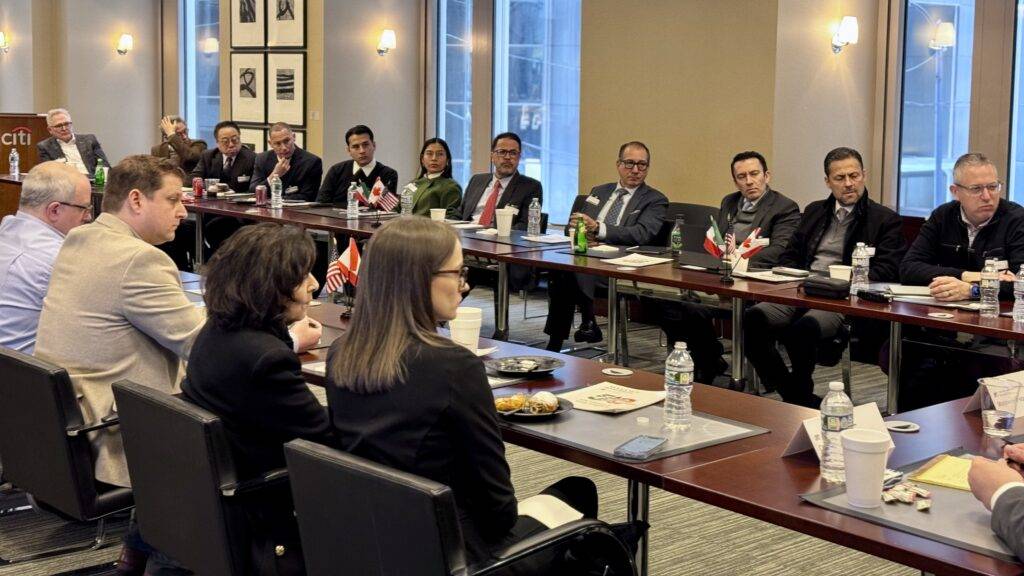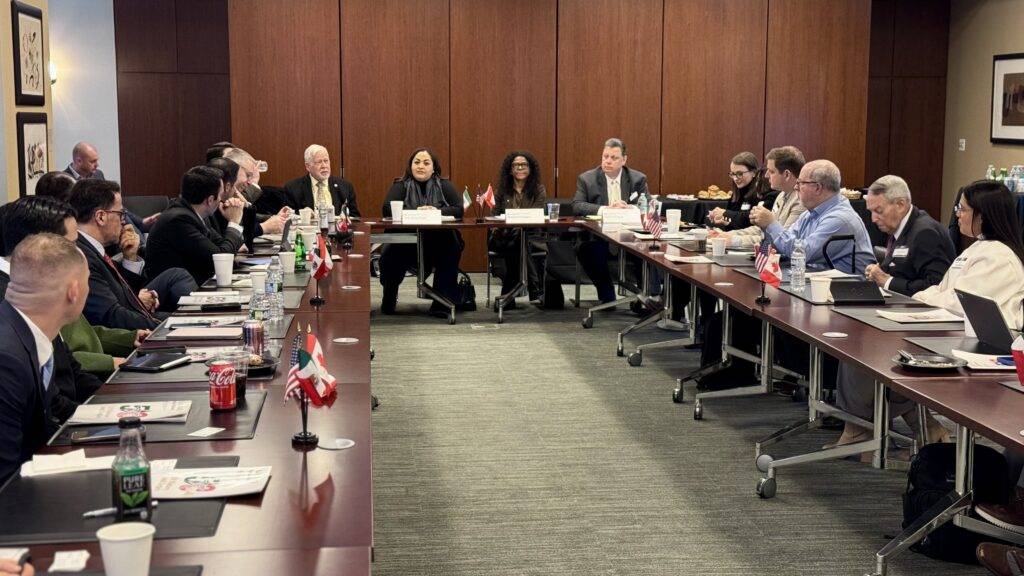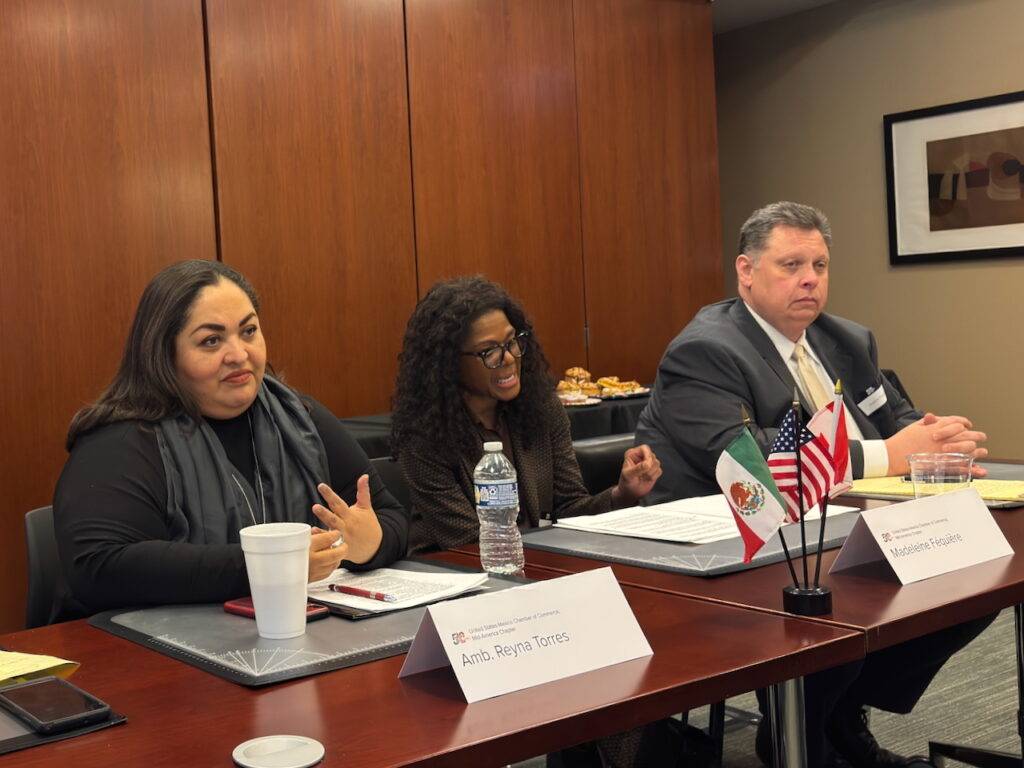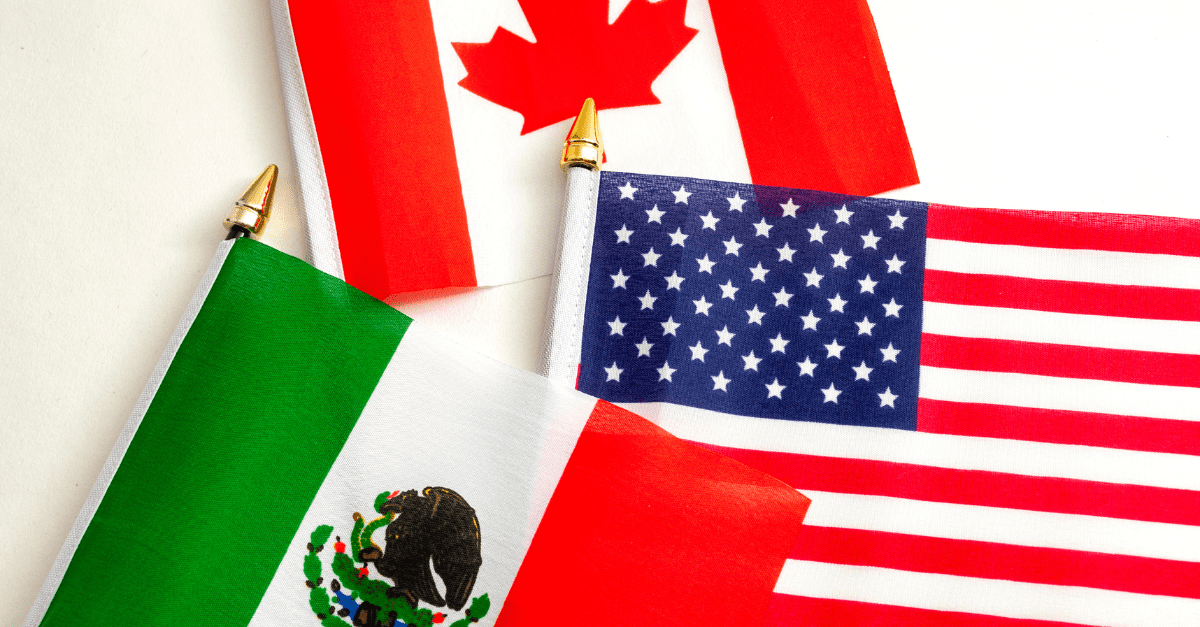On Wednesday, February 19th, I had the pleasure of attending an event organized by the US-Mexico Chamber of Commerce Mid-America Chapter and the International Trade Association of Greater Chicago. The topic was billed as “Trilateral Leadership: New Presidents in the US and Mexico – Implications for USMCA and Trade Relations,” but the conversation was definitely focused on the near-imposition of 25% tariffs on goods of Canadian and Mexican origin, the announced steel and aluminum tariffs and ways that the business community can work with state and federal lawmakers to help the White House and administration understand the important role that trade plays in the largest trading bloc by value in the world.

Featured speakers were the consul generals from Mexico and Canada alongside Barnes/Richardson international trade attorney David Forgue. The numbers tell the story: US-Mexico trade reached $800 billion last year, with Mexico serving as America’s top trading partner since 2019. US-Canada trade approaches $1 trillion annually, with $2.5 billion in goods crossing the border daily. Together, the three nations represent the world’s largest trading bloc at $1.7 trillion.
When faced with threatened 25% tariffs, both Mexico and Canada moved quickly to address U.S. concerns. Mexico deployed 10,000 National Guard members to its southern border and agreed to enhanced security cooperation, particularly around fentanyl trafficking. Canada committed $1 billion to strengthen its border security and immigration systems, noting that only 0.2% of fentanyl seizures and less than 1% of irregular migrant encounters occur at the U.S.-Canadian border.

For logistics providers, these developments signal two critical imperatives. First, the combination of geopolitical tensions and the administration’s relentless focus on China owing to White House Senior Advisor Peter Navarro means that China and China-made products will never be out of this group’s crosshairs. This presents an opportunity for logistics companies to be having conversations with clients about diversifying their supply chains away from China and how they, through classification, valuation and agent partners in countries around the world, can support that diversification. That diversification can and should include places like Canada and Mexico, who Alberto Villarreal of Nepanoa noted has over 100 industrial parks under development, with major investments in semiconductor production and infrastructure improvements planned.
Second, logistics providers without established cross-border capabilities need to act now. They must be ready to support clients with comprehensive freight forwarding and customs clearance services as manufacturing shifts closer to home. From a marketing standpoint, they should be including content on issues here in the USMCA region, as well as evaluating whether or not to add Spanish and French to their websites to support the language needs of America’s continental neighbors.

The complexity and opportunities of cross-border trade – exemplified by the 16,000 trucks crossing daily at Laredo alone – demands sophisticated logistics solutions.
With over 5 million North American jobs depending on trilateral trade, including 200,000 in Illinois alone, the opportunity for logistics providers to facilitate and benefit from renewed continental integration has never been clearer. The room full of attendees from logistics companies, finance, law, tax, and shippers took away the message to communicate and advocate for business close to home, and Position : Global stands ready to help.





